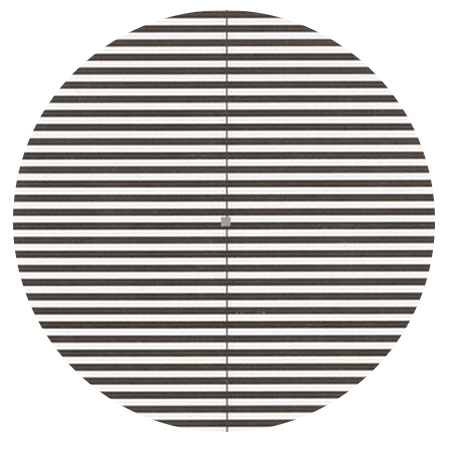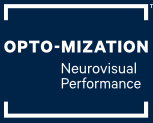Unfortunately, many of the highly marketed approaches miss some of the fundamental ways of improving your computer screen tolerance and working ability.
Problems with how the eyes and the brain work together can cause everything from minor to major difficulties with computer usage. This has been referred to in the past as computer vision syndrome and binocular dysfunction. These problems are even more common after concussion or brain injury. Common symptoms include:
-
- Headaches/migraines
- Dizziness
- Difficulty staying focused
- Fatigue
- Need for frequent breaks
- Making mistakes in work

SELF TEST
Here is an easy way to see if your eyes are part of your problem with computer screens. If this image bothers you, then your vision is part of the problem.
Click on this link, and if the image bothers you, or causes any discomfort, we know that your eyes are part of the problem.
How does your vision relate to computer screen difficulty?
Visual Function
Common conditions such as convergence insufficiency, accommodative dysfunction, or binocular dysfunction mean that your eyes strain to work together. This is often much more noticeable on a computer screen than on a printed page.
The fix: These visual conditions can be identified by in-depth testing of how well the eyes focus and work together.

Here’s a patient testimonial showing how computer-related vision problems were solved through Neuro-Optometric Rehabilitation.
Vision Therapy Helps
I was diagnosed with disequilibrium and vestibular/ vision mismatch last fall. It was so debilitating that I was unable to work. I was almost constantly dizzy, nauseated, and anxious. I was unable to concentrate and had frequent headaches whenever I tried to read a book or work on the computer. I tried vestibular and balance rehabilitation but made little progress until I started visual rehabilitation with Dr. McCrodan and his team.
Dr. McCrodan was able to explain everything to me and the results of the rehabilitation happened exactly the way he had explained. It took about 3 months of therapy but then I really started to see improvement and noticed that I could read or use the computer for 30-60 min without headaches. I was able to go out of the house and not be afraid of becoming dizzy and nauseated. I made steady progress after that and have completed 20 weeks of therapy now.
I recently drove to Vancouver and took the ferry and had no difficulty with vertigo. I’m so improved that I am returning to my job as an RN. I know I would not be able to do this without the help of Dr. McCrodan and his wonderful team.
The Prescription Itself
Most glasses prescriptions are written to give you clear vision in the distance. Sometimes your optometrist will prescribe you progressives, reading glasses, or a bifocal to also give clarity at near. The problem is that the prescription is most often not designed for usage at the computer.
A well-designed computer prescription should take into account exactly how your eyes track and work together at your computer. This will reduce the amount of strain, fatigue, and other symptoms you experience from computer use.
Our ErgopticsTM prescriptions include these factors, bringing you relief and improved performance at the computer.
The Glasses
Progressive lenses are often sold as the ‘can do everything’ glasses. This can cause major problems for computer users. The progressive lens changes as you look downwards, bringing your focus in closer. So when you’re looking at your desktop computer one of two things will happen.
A. You will gradually start to tilt your head back to try to get into the ‘close’ area of the lens. Long term this can lead to neck problems on top of eye strain.
B. Even though you can ‘see’ the computer, you are likely looking through a part of the lens that will cause you extra strain and symptoms such as headaches, dizziness, migraines, and more.
Use the SELF-test above to check.
Even if you have computer glasses, they may still be part of the problem. Most computer glasses are made by adjusting your prescription with a generic formula. The problem with these ‘one size fits all’ computer glasses is that they do not factor in how your eyes work.
The Fix
See an optometrist who can give you a specific prescription for computer glasses that will improve how efficiently your eyes work. We call these therapeutic glasses prescriptions ErgopticsTM. The prescription should also specify the exact lens design and manufacturer so that nothing is left to chance.
